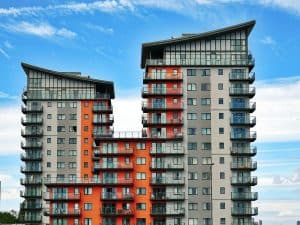Key Takeaways
- Understanding the importance of masonry waterproofing for structural integrity.
- Identifying common issues caused by water damage in masonry.
- Exploring various methods and materials used for waterproofing.
- Learning maintenance tips to prolong the life of masonry structures.
Introduction to Masonry Waterproofing
Masonry structures, renowned for their durability and aesthetic appeal, have long been a popular choice for residential and commercial buildings. These buildings are durable and long-lasting, but they are not immune to the damaging effects of water. Proper masonry waterproofing is crucial for maintaining the integrity and longevity of these beautiful constructions. Waterproofing ensures that water does not infiltrate the masonry, which can lead to structural issues, such as cracking, spalling, and displacement, as well as aesthetic problems like staining and efflorescence. Property owners can protect their masonry buildings from moisture damage by investing in effective waterproofing techniques and significantly prolonging their lifespan. Waterproofing not only preserves the structure’s appearance but also prevents costly repairs in the future.
Maintenance Tips for Longevity
Regular Cleaning
One simple yet effective tip is to keep the masonry clean and debris-free. Plant growth, dirt, and organic matter can trap moisture against the masonry, leading to potential water damage. Frequent cleaning using gentle soap and water can uphold the building’s appearance and stop moisture accumulation.
Inspect and Seal Cracks
Another critical maintenance practice is inspecting the structure for cracks and promptly sealing them. Even tiny cracks can allow water to penetrate and cause significant damage over time. Using a high-quality sealant designed for masonry will provide the best results. Frequent checks, ideally done bi-annually, can assist in spotting potential problems before they escalate.
Common Issues Caused by Water Damage
Water damage can wreak havoc on masonry structures if not adequately addressed. Common issues include efflorescence, mold growth, and freeze-thaw damage. Efflorescence is characterized by white, powdery deposits on masonry surfaces and occurs when water dissolves salts within the masonry and brings them to the surface. It is not only an aesthetic issue but also a sign that moisture is penetrating the masonry.
Efflorescence isn’t just unsightly; it can also indicate ongoing moisture problems that can accelerate the deterioration of the structure. The presence of mold can impact indoor air quality and lead to health problems for people living or working in the space, whereas freeze-thaw damage occurs when water enters cracks, freezes, and expands. This expansion can lead to masonry deterioration, causing significant structural damage if left unchecked.
Methods and Materials for Waterproofing Masonry
There are various methods to waterproof masonry structures, each with advantages and suitable applications. Some popular techniques include using sealants, membranes, and waterproof coatings. Silane-based sealants, for instance, penetrate the masonry and provide long-lasting protection without altering its appearance. These sealants form a chemical bond with the masonry, creating a water-resistant barrier that allows the structure to breathe.
Another effective material is waterproof membranes, which are typically applied during the construction phase. These membranes form a barrier that prevents water ingress and are particularly useful for foundations and below-grade structures. Additionally, advanced waterproof coatings can be applied to new and existing structures to provide a protective layer. These coatings come in various formulations tailored to different types of masonry and environmental conditions.
Advanced waterproof coatings can be selected based on UV resistance, flexibility, and breathability. It ensures optimal protection, allowing property owners to choose the most suitable option.
Real-Life Example: Preventing Water Damage
Consider the case of a historic building in a region with harsh winters. The building owners noticed efflorescence on the brick walls, a clear sign of water ingress. By hiring professional masonry waterproofing services, they applied a combination of silane-based sealants and waterproof coatings. This intervention removed the efflorescence and protected the building from future freeze-thaw damage, ensuring its continued use for generations. This proactive approach preserved the building’s historical value and prevented costly repairs and potential structural failures.
Conclusion
Protecting masonry structures from water damage is essential for preserving their beauty and structural integrity. Understanding the common problems can significantly increase the lifespan of masonry constructions for property owners, utilizing effective waterproofing methods and conducting regular maintenance. Investing in masonry waterproofing today ensures that these timeless structures can be enjoyed for many years. Taking steps now to waterproof and maintain these buildings will save time, money, and effort in the future, making it a worthwhile investment for any property owner.

